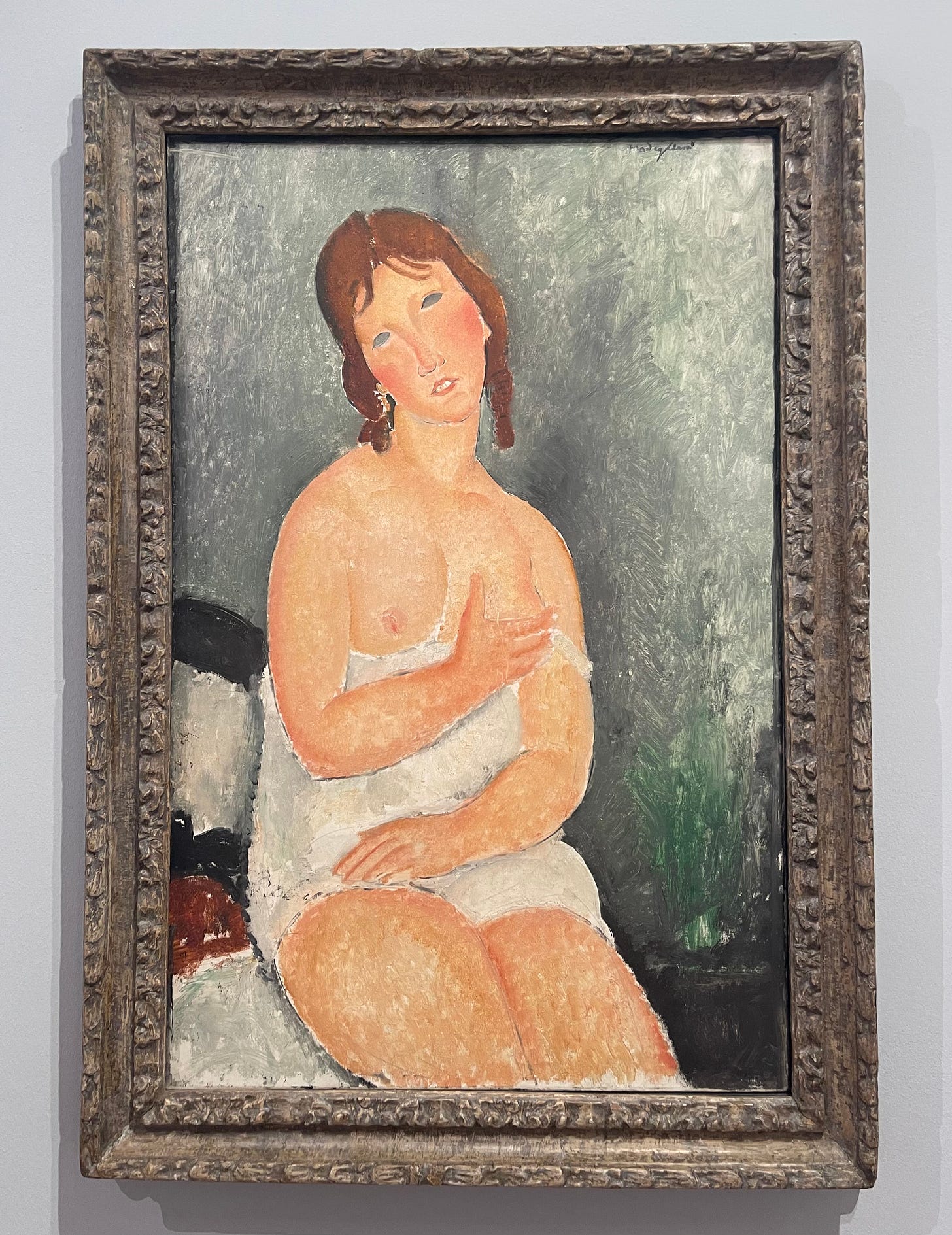How to look someone in the eyes
Eye contact is a luminous crossing where two people meet, make galactic intercourse, then recoil, changed.
Modigliani was known for paintings faces without eyes. He left sockets hollow, exposing the wall behind the subject, like this:
He believed that the eyes were the windows to the soul, and that the soul was too sacred to be depicted. “When I know your soul,” he once told a sitter, “I will paint your eyes.” The only person he ever painted with eyes was Jeanne, his 21-year-old wife, who threw herself off the fifth-floor balcony while pregnant with their second child two days after her husband’s death. Her epitaph reads, “Devoted companion to the extreme sacrifice.”
The ears can ignore, the hands can distract, the mouth can lie, the posture can deceive, but the eyes insist on revelation. Of course, the unbearable intensity of looking and being looked back at is daunting.
There’s more than one kind of look:
The quick dart (used to acknowledge beautiful strangers at a cafe or to get the waiter’s attention)
The long stare (used to fantasize and/or dissociate while the other person is launching into their third tangent from the main story)
The furtive glance that carries shame or naughtiness (used to communicate conspiracy or dirty jokes with a friend across the living room)
The locked and hungry gaze (depending on the context, can either lead to fighting or fornicating)
To look someone in the eye is to try to contain dizziness in a little glass jar. To fall into the well of recognition and be terrified at the depth, the watery pit where you see both yourself and the other, doubled on the glassy surface of their cornea and distorted in their cortex. It’s why most people spend their lives glancing—at noses, at glabellas, at brows, at the safe geography around the eyes—because the direct path is too transgressive. And it is, actually, because when two people hold eye contact, they connect each other’s portals where their histories leak into the present: all the uninvited guests of memory inch forward, the childhood humiliations, the faces of dead relatives or exes (some half-forgotten, others half-forgiven), confessions you promised you’d never let influence your emotions, all of them rising like dust motes in a shaft of light, and suddenly the eye you’re looking into becomes a crowded theater where a thousand little heads gaze back at you, waiting for you to say something honest or clever or funny.
The dizziness comes from recognizing that both you and the other are complicated. You’re trying to make sense of the multitude you see in them, while confronting the multitude you have stowed inside yourself. It’s like the face you’re looking at has turned into a mirror. Perhaps this is why lovers and enemies alike are dangerous in their staring: both are willing to stand with you at the mouth of that well, refuse to look away, and demand that you acknowledge what you spend your waking hours pretending does not exist.



